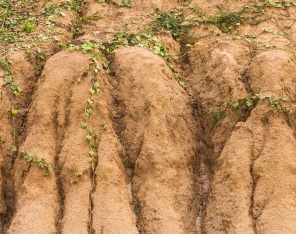
What’s The Difference Between Hydroseeding And Hydromulching?

Whether you’ve reached the end of a construction project or are preparing a mine site rehabilitation plan, you’ve probably come across the terms ‘hydroseeding’ and ‘hydromulching’ as you research an effective revegetation strategy.
Hydroseeding and hydromulching are efficient and impressive alternatives to traditional planting processes, such as hand seeding, drill seeding and sod applications. Both methods are more economical than laying turf, can reach rough or otherwise inaccessible areas such as high slopes, and produce thicker, healthier vegetation that binds with the ground surface soil to effectively protect against erosion.
But while these two terms are often used interchangeably, there are some core differences between the practical applications of hydroseeding and hydromulching:
Hydroseeding
Hydroseeding uses water as a carrier to spray seed and fertiliser onto the seedbed. Specially designed hydroseeding equipment allows the operator to agitate the hydroseed mixture to ensure even and constant mixing of ingredients so that the designated area is evenly covered and without sparse or patchy spots.
The hydroseed mix can be sprayed using hoses which makes it an effective way of distributing seed and fertiliser, especially for large or hard-to-reach areas where alternative seeding methods aren’t easily accomplished.
Hydromulching
Hydromulching is similar to hydroseeding, but it adds a fibre-mulch to the mixture of seed, fertiliser and water. The mulch acts as a cover for the seed, helping it retain moisture for faster germination and growth, while protecting the soil from erosion and the seeds from washing away in the rain.
The hydromulching mix is applied in the same way as hydroseeding and typically consists of a slurry of seed, fertiliser, water, tackifiers, biologically active soil conditioners, an optional colour dye, and organic mulch fibres which will degrade over several months.
Hydroseeding and Hydromulching Benefits
Hydroseeding and hydromulching are efficient and sustainable methods of rehabilitating and revegetating cleared lands on construction or mine sites, especially when compared to traditional forms of seeding.
Hydroseeding and hydromulching:
- Are faster and easier to install than traditional seeding methods.
- Typically cost less than laying turf or hand seeding.
- Hold moisture to support faster vegetation growth.
- Minimise erosion to support strong, healthy vegetation growth.
- Retain water so that far less water is required.
- Are completely safe, non-toxic and environmentally friendly seeding methods.





